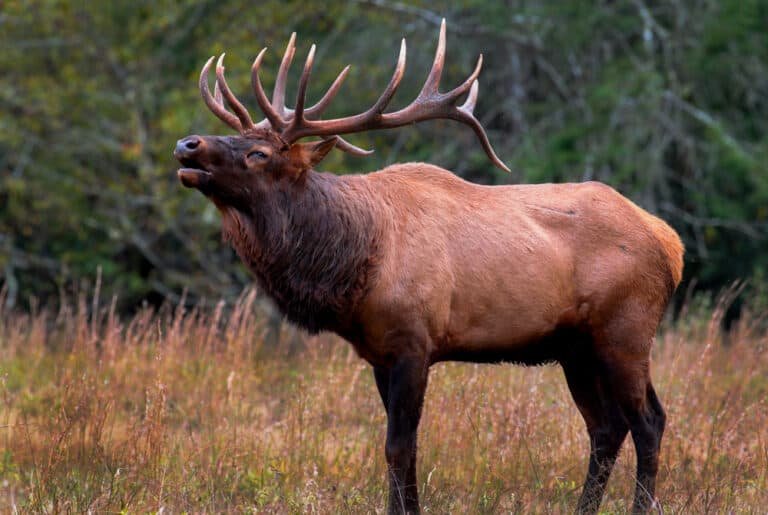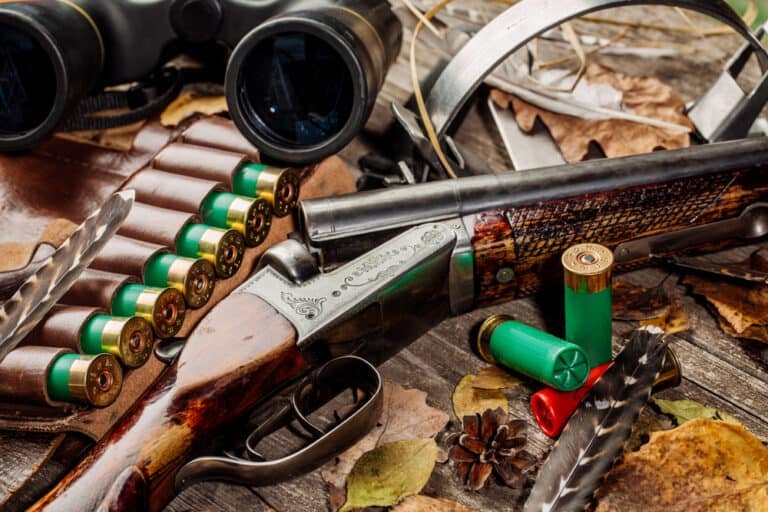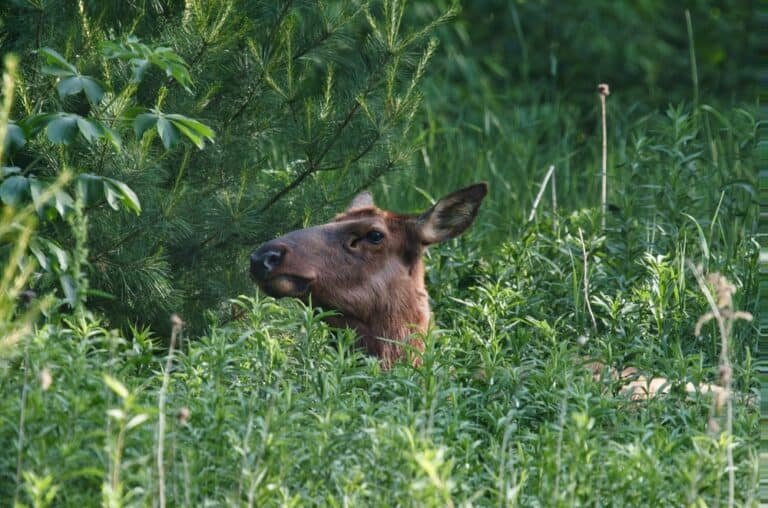Ultimate Guide to Colorado Elk Hunting: What to Know
Colorado elk hunting has earned its rightful place as one of the most exhilarating outdoor activities, attracting hunters from all corners of the globe. As the state is renowned for its diverse landscapes and abundant wildlife, it is no surprise that Colorado is an ideal destination for elk hunting enthusiasts.
The rugged terrains, picturesque mountain ranges, and vast expanses of wilderness create an awe-inspiring backdrop for this thrilling pursuit. Colorado’s rich history and long-standing commitment to conservation make it a prime location for elk hunting.
It boasts a thriving population of Rocky Mountain elk (Cervus elaphus nelsoni), captivating hunters with majestic stature and impressive antlers. Understanding the cultural significance and ecological importance of elk hunting in this state is essential to appreciate the experience fully.
Preserving Tradition: The Legacy of Elk Hunting in Colorado
Colorado has a deep-rooted history of elk hunting, dating back to ancient Native American tribes who relied on these magnificent creatures for sustenance. Over time, this practice evolved into a longstanding tradition that transcends generations. Today, elk hunting preserves cultural heritage and contributes significantly to wildlife management efforts.
The Colorado Parks and Wildlife (CPW) department is crucial in overseeing elk populations and implementing regulations that ensure sustainable harvests while protecting the species’ long-term survival. Understanding these regulations is fundamental for aspiring or seasoned hunters venturing into the illustrious landscapes where elk roam freely.
A Symphony of Regulations: Navigating Elk Hunting Rules
Elk hunting in Colorado follows a comprehensive set of rules to maintain healthy populations while providing fair opportunities for hunters. These regulations include licensing procedures, tag allocations, season dates, bag limits, and more.
Familiarizing oneself with the intricate regulations is paramount to safeguarding the natural balance and the hunter’s legal standing. Each hunting unit in Colorado has specific regulations tailored to manage elk populations effectively.
Some units operate under over-the-counter (OTC) tags, while others require hunters to participate in a limited draw system that offers coveted tags through a random selection process. Furthermore, understanding preference point systems and how they contribute to tag allocations can greatly enhance one’s chances of securing a prized opportunity.
By adhering to these regulations, hunters can demonstrate their dedication to wildlife conservation and maintain the delicate equilibrium between humans and nature. Elk hunting in Colorado encompasses the thrill of the chase and a commitment to preserving this cherished tradition for future generations.
The Magnificent Elk Species
A Spectacular Creature Roaming Colorado’s Wilderness
The Rocky Mountain elk (Cervus elaphus nelsoni) is a majestic species that calls Colorado’s vast and rugged landscapes home. These magnificent creatures stand tall, with mature bulls reaching heights of up to five feet at the shoulder. Their weight varies greatly, but a fully grown bull can tip the scales at an impressive 700 pounds.
The elk’s most striking feature is undoubtedly its antlers. These grand appendages can span up to four feet in length and showcase a remarkable display of branching tines that evoke awe and reverence among hunters and outdoor enthusiasts alike.
Unveiling the Unique Characteristics and Behavior of Elk
Elk possess characteristics that set them apart from other wildlife in Colorado’s wilderness. One notable characteristic is their keen sense of hearing, which enables them to detect even the slightest sounds amidst the tranquility of nature.
Additionally, their sharp eyesight allows them to spot movement over vast distances. Despite their large size, they are also incredibly agile, displaying remarkable speed when traversing diverse terrains such as dense forests or steep mountainsides.
The Cycle of Antler Growth and Shedding
The awe-inspiring antlers adorning male elk are essential in their biology and behavior. Each year, these impressive antlers undergo a fascinating growth cycle.
After shedding their previous set during early spring, bulls swiftly commence regrowth by nurturing new antler buds through the summer months. Richly supplied with blood vessels known as velvet, the antlers develop rapidly during this stage until they reach full maturity by late summer or early fall—an exhilarating transformation observed by a few fortunate witnesses traversing elk habitats.
Rutting Season: A Time of Magnificence and Testosterone-Fueled Battles
The fall season in Colorado brings about the much-anticipated rutting season, a time of intense competition among male elk. During this period, bulls engage in dramatic displays of dominance to establish their hierarchy and win the favor of receptive cows. The resonating bugles and grunts echo through the valleys as bulls engage in fierce battles, their majestic antlers clashing with thunderous force.
Witnessing this primal spectacle is a testament to these remarkable creatures’ raw power and primal beauty. With an understanding of the Rocky Mountain elk’s captivating characteristics, behavior, antler growth cycles, and riveting rutting season rituals, one can gain a deeper appreciation for these majestic creatures that roam the vast wilderness of Colorado. This knowledge enhances the experience and pursuit of elk hunting in this picturesque state.
Understanding Elk Habitats in Colorado
Exploration of Different Ecosystems Where Elk Thrive in Colorado
Colorado’s diverse landscapes offer a variety of ecosystems that serve as ideal habitats for elk. One such ecosystem is the montane forests and meadows. These areas, found at lower elevations, are characterized by dense coniferous forests intermixed with open meadows and shrublands.
Montane regions provide ample food sources such as grasses, forbs, and browse that elk rely on throughout the year. Additionally, they offer sufficient cover and shelter during inclement weather or seeking refuge from predators.
This habitat provides excellent opportunities for elk hunting in Colorado as it is often teeming with these majestic creatures. Another notable ecosystem where elk thrive in Colorado is the alpine tundra region.
Situated at higher elevations above the tree line, this harsh yet breathtaking environment challenges humans and animals alike. The alpine tundra offers vast expanses of open terrain with limited vegetation but is a vital summer grazing ground for elk herds.
These high-altitude areas boast nutrient-rich grasses and sedges that sustain the elk during the summer when food sources are less abundant elsewhere. Understanding the adaptability of elk to these extreme conditions is crucial for successful elk hunting in Colorado’s alpine regions.
Discussion on Preferred Food Sources for Elk Throughout the Year
Elk have specific dietary preferences throughout different seasons, depending on their nutritional requirements and food availability within their habitats. In the spring, after enduring a long winter, elks heavily rely on tender grass shoots found in montane meadows as their primary food source. These highly nutritious plants aid in replenishing energy reserves after months of limited feeding opportunities.
During summer, as snow melts away from higher elevations, lush vegetation becomes available to elks. They take advantage of the diverse forage options, including sedges, willows, and grasses that thrive in montane meadows and alpine tundra regions.
This period is crucial for elk as they must accumulate fat reserves to sustain them through the upcoming rutting season. As autumn approaches, elk focus on consuming more woody browse like shrubs and young saplings from aspen and willow stands.
These fibrous food sources assist in building up energy stores necessary for the demanding rut ahead. When winter arrives, snow cover restricts access to vegetation in higher elevations, prompting elk herds to descend into lower montane forests where they rely on coniferous browse such as pine and fir needles.
Elk’s ability to digest this coarse material during winter exemplifies their resourcefulness in adapting to harsh environmental conditions. Understanding the variations in preferred food sources throughout the year is vital for an elk hunter aiming to locate these majestic animals during specific seasons or habitats across Colorado’s diverse landscapes.
Preparing for an Elk Hunt in Colorado
Researching hunting units and acquiring necessary licenses/tags
Aspiring elk hunters in Colorado must begin their journey by thoroughly researching the different hunting units within the state. Each unit has its characteristics, including terrain, elk population density, and hunting pressure. Understanding these factors is crucial to maximizing your chances of success.
Additionally, acquiring the necessary licenses and tags is vital in ensuring a legal and responsible hunt. The Colorado Parks and Wildlife website provides detailed information about available licenses and permits and application deadlines.
Explanation of limited draw system for tags
Colorado employs a limited draw system for distributing elk hunting tags to maintain sustainable populations and manage hunter participation. This means that not all hunters will be guaranteed a tag each year.
Instead, tags are allocated through a random drawing process based on preference points, which can be accumulated over time by unsuccessful applicants. This system promotes fairness while allowing dedicated hunters with more preference points to have increased odds of receiving a tag.
Overview of preference points system for tag allocation
The preference point system awards additional points to applicants who cannot obtain a tag during the annual drawing. These points increase an individual’s chances of being selected in subsequent years’ draws.
The more preference points one accumulates, the higher their theity when allocating available tags. This encourages long-term commitment to elk hunting in Colorado while offering fair opportunities for seasoned veterans and newcomers.
Physical conditioning and mental preparation required for a successful hunt
Colorado’s rugged terrain can pose physical challenges during an elk hunt that requires physical conditioning beforehand. Regular cardiovascular exercises such as hiking or running can improve the stamina needed for long hours of trekking through various elevations. Strength training exercises targeting core muscles are beneficial for carrying equipment and packing harvested games.
Mental preparation is just as important, as elk hunting requires patience, perseverance, and the ability to stay focused during long hours in the field. Developing mental strategies such as mindfulness techniques or visualization exercises can enhance concentration and increase chances of success.
Equipment and Gear Essentials
Firearms, Archery, or Muzzleloader options
When selecting a weapon for elk hunting in Colorado, hunters have three primary choices: firearms, archery equipment (bows), or muzzleloaders. Each method has its advantages and disadvantages. Firearms offer greater accuracy at longer distances while providing a higher velocity for cleaner kills.
Archery allows hunters to get closer to their target using stealth and offers a more challenging experience. Muzzleloaders provide a traditional approach with a limited d range but are favored by those seeking an authentic hunting experience.
Recommended calibers or bow setups
For firearms enthusiasts, popular calibers for elk hunting in Colorado include .270 Winchester, .30-06 Springfield, .300 Winchester Magnum, and 7mm Remington Magnum. These calibers offer adequate power and accuracy for ethically taking down an elk at various distances.
Regarding archery setups, compound bows with a draw weight between 50-70 pounds are recommended to generate sufficient kinetic energy for clean kills. It is crucial to consult local regulations regarding minimum arrow mass requirements.
Clothing, footwear, optics, backpacks, camping gear
Proper clothing becomes essential when venturing into the unpredictable wilderness during an elk hunt in Colorado’s diverse terrain and ever-changing weather conditions. A layering system is highly recommended—starting with moisture-wicking base layers followed by insulating mid-layers such as fleece or down jackets.
Finish off with durable, waterproof outer layers like GORE-TEX rain gear. Additionally, investing in quality boots with ankle support and insulation is crucial for traversing rugged landscapes comfortably.
Optics, such as binoculars or spotting scopes, aid in spotting elk from long distances. Backpacks for carrying heavy loads and camping gear suitable for backcountry stays are essential to sustain extended hunting trips.
Techniques and Strategies for Elk Hunting Success
Elk hunting requires a combination of skill, knowledge, and patience. Employing effective techniques and strategies can greatly improve your chances of success.
Some key tactics include studying topographic maps to identify potential elk habitats, scouting the areas before the hunt to locate signs of elk activity such as tracks or rubs, learning how to effectively call elk using bugles or cow calls, and utilizing wind direction to mask human scent while approaching or ambushing elks. It is crucial to adapt hunting strategies according to prevailing weather conditions and the behavior of local popular.

Conclusion
In the picturesque landscapes of Colorado, embarking on an elk hunting adventure is not merely a pursuit but an opportunity to immerse oneself in nature’s grandeur. Aspiring hunters must prepare diligently by researching hunting units, understanding tag allocation systems like preference points, improving their physical conditioning through fitness routines suited for high altitude terrains, and honing their mental focus for long hours in the field.
Equipping oneself with suitable firearms or archery gear along with appropriate clothing layers, footwear, optics, backpacks, and camping gear ensures comfort during the hunt. By employing effective techniques and strategies characterized by ingenuity and persistence while respecting wildlife conservation principles—elk hunting in Colorado becomes an experience that captures both adrenaline-fueled excitement and a profound connection with nature’s untamed beauty.







buying prescription drugs in mexico: reputable mexican pharmacies online – mexican pharmacy
medication from mexico pharmacy
https://cmqpharma.online/# medication from mexico pharmacy
best online pharmacies in mexico
You have noted very interesting details! ps nice internet site.Blog money
canada cloud pharmacy: pet meds without vet prescription canada – canada drugs online reviews
http://foruspharma.com/# reputable mexican pharmacies online
best online pharmacy india indian pharmacy top online pharmacy india
buying prescription drugs in mexico online: best online pharmacies in mexico – п»їbest mexican online pharmacies
indian pharmacy online: india pharmacy mail order – best online pharmacy india
canadian pharmacy meds review: canadian pharmacy ratings – canadian online pharmacy
buying prescription drugs in mexico mexican online pharmacies prescription drugs mexican mail order pharmacies
best india pharmacy: buy prescription drugs from india – online shopping pharmacy india
https://canadapharmast.com/# best canadian online pharmacy reviews
mexican mail order pharmacies: mexico pharmacy – mexico drug stores pharmacies
buying prescription drugs in mexico: mexican mail order pharmacies – buying prescription drugs in mexico online
п»їlegitimate online pharmacies india best online pharmacy india п»їlegitimate online pharmacies india
canadian pharmacy: canadian pharmacy meds reviews – canada rx pharmacy
http://indiapharmast.com/# best india pharmacy
mexico drug stores pharmacies: mexico pharmacy – purple pharmacy mexico price list
mexican drugstore online mexico drug stores pharmacies п»їbest mexican online pharmacies
canadian discount pharmacy: canadian pharmacies online – my canadian pharmacy
ed meds online canada: northwest canadian pharmacy – canadian pharmacy antibiotics
https://clomiddelivery.pro/# can i order cheap clomid without rx
http://paxloviddelivery.pro/# Paxlovid over the counter
http://amoxildelivery.pro/# amoxicillin azithromycin
http://amoxildelivery.pro/# amoxicillin 500 coupon
http://paxloviddelivery.pro/# п»їpaxlovid
http://paxloviddelivery.pro/# buy paxlovid online
http://amoxildelivery.pro/# amoxicillin discount
https://amoxildelivery.pro/# purchase amoxicillin online
https://ciprodelivery.pro/# cipro for sale